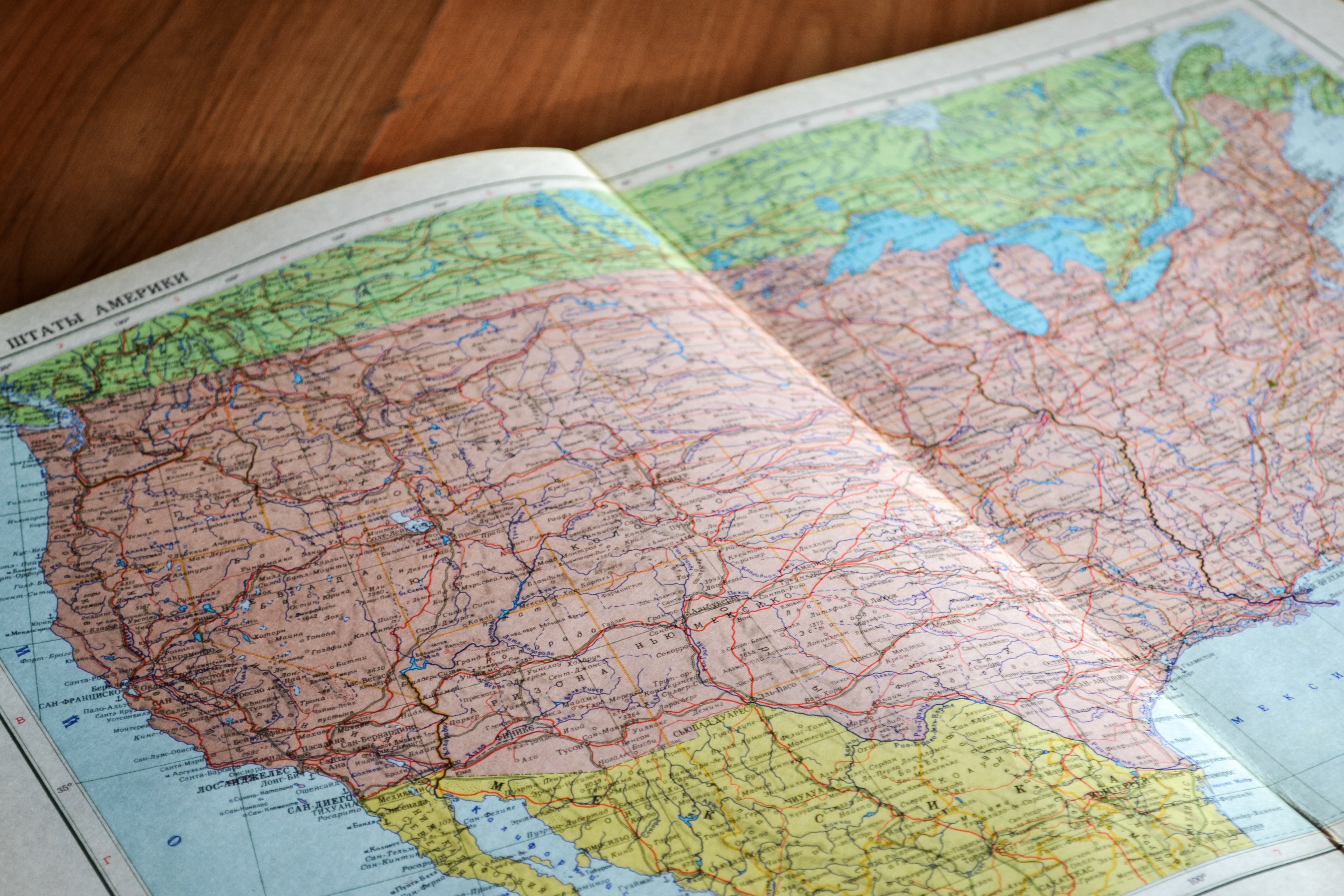As an entrepreneur passionate about your business, you might have heard about the Supreme Court’s decision last June in South Dakota v. Wayfair, when that state went after the online retail giant (among other big ecommerce businesses). As a refresher, here’s the bottom line: the Court determined that Wayfair – and by association, ecommerce businesses categorically – could be liable to collect taxes in a state even if they don’t have a physical presence, or “nexus,” there.
Sounds a little grim, we know. But what does it mean, exactly, for your business? And how does the subscription model impact the tax collection process?
Read more: Our help doc offers a summary of how this ruling impacts Cratejoy sellers.
Determining Nexus
Before the Wayfair ruling, retail businesses were required to collect taxes from sales in any state where they had “nexus”: in other words, a physical business presence. While this remains the case today, this decision by the Court has loosened the definition of nexus; you don’t need to have a physical presence in a state to have what they now call “economic nexus” there.
States define nexus in a variety of ways, so it’s worth looking up its definition in any state where you have subscribers.
Here are a few ways you could have nexus in a state:
- Your business address is located in that state. Obviously, your location counts as a physical business presence, even if most of your labor and sales are based online.
- You have a fulfillment center located in that state. If your business is big enough to outsource your packing and shipping process, the warehouse where your orders are fulfilled is proof of your business’s committed presence in that state.
- You have employee(s) in that state. Depending on the state’s definition, you may have to collect taxes if your business employs people outside your state of origin.
- Your annual sales totals meet a certain threshold in that state. Here’s where “economic nexus” comes in. Let’s say you’re based on the East Coast, but for some reason, South Dakotans love your box and you sell over $100,000 in subscriptions that year. Since $100k is the defined threshold for South Dakota, you would be considered to have economic nexus there. However, it’s not clear yet what financial thresholds other states will set up to determine economic nexus.
Most importantly, remember that what constitutes nexus is defined differently from state to state. (See a breakdown of how each state defines it at TaxJar.) That means you’ll need to keep track of the standards for each state you sell in… and that means you should definitely, absolutely see a tax professional to be safe.
Seriously: As passionate as we are about sub box businesses, we are not professional tax advisers and recommend you speak with an outside agent about how the Wayfair ruling might impact your sales operations. You can set up a consultation with a tax agent for small businesses at HR Block or through TaxJar’s directory of ecommerce accountants.
Origin vs. Destination
Another important factor is whether your business is located in an origin-based or destination-based tax state. “Origin” means that your business location determines the tax amount, while “destination” means that the buyer/subscriber’s location determines it.
But it’s crucial to note that by “location,” we don’t just mean the state – we mean the county and city, too. Many states have different tax rates from district to district, town to town, or county to county. So keep track of the smorgasbord of tax rates for a given address.
The majority of states are destination-based, but a good dozen base their tax law on business origin. Here’s the breakdown:
| Origin-Based | Destination-Based |
| Arizona | Alabama |
| California* | Arkansas |
| Illinois | Colorado |
| Mississippi | Connecticut |
| Missouri | District of Columbia |
| New Mexico | Florida |
| Ohio | Georgia |
| Pennsylvania | Hawaii |
| Tennessee | Idaho |
| Texas | Indiana |
| Utah | Iowa |
| Virginia | Kansas |
| Kentucky | |
| Louisiana | |
| Maine | |
| Maryland | |
| Massachusetts | |
| Michigan | |
| Minnesota | |
| Nebraska | |
| Nevada | |
| New Jersey | |
| New York | |
| North Carolina | |
| North Dakota | |
| Oklahoma | |
| Rhode Island | |
| South Carolina | |
| South Dakota | |
| Vermont | |
| Washington | |
| West Virginia | |
| Wisconsin | |
| Wyoming |
Note: California bases its state, county, and city taxes on business origin, but bases its district taxes on destination (i.e., the buyer’s location). Also, you might notice that a few states (New Hampshire, Montana, Oregon, Delaware, and Alaska) are missing from this chart. Those states don’t charge sales tax!
What to Do If You Have Nexus
If you base your business in one state (say, Texas) but you conduct enough business in another state (say, working with a fulfillment center in California) to have nexus there, you’re a “remote seller” in the latter state. The sales tax that remote sellers collect on behalf of their out-of-state customers is called “use tax.”
If you’re considered a remote seller in a given state, it’s likely you’ll need to collect taxes at a destination-based rate.
However! You can’t just go about collecting use tax right away, because states approach in-state and remote sellers differently. In order to conduct business as a remote seller, your business needs to apply for a sales tax permit in each state where they would have a presence. You might also need to charge taxes on shipping fees – and whether they are taxable depends on whether you include shipping in your box cost or note shipping as a separate charge.
States where shipping is taxable include:
- Arkansas
- Colorado
- Connecticut
- D.C.
- Florida (depends on specific criteria)
- Georgia
- Hawaii
- Illinois
- Indiana
- Kansas
- Kentucky
- Michigan
- Minnesota
- Mississippi
- Nebraska
- New Jersey
- New Mexico
- New York
- North Carolina
- North Dakota
- Ohio
- Pennsylvania
- Rhode Island
- South Carolina
- South Dakota
- Tennessee
- Texas
- Vermont
- Washington
- West Virginia
- Wisconsin
As always, we recommend speaking with a tax professional to make sure you’re taking all the variables into account when you project your tax collection and costs.
Notice and Report Laws
These are different than economic nexus laws, but not far off. Here’s where use tax comes in!
Use tax refers to consumer use: meaning that consumers who buy products from an out-of-state business (like an ecommerce store) are supposed to track these purchases and pay taxes on them to the state the consumer lives in. Since many online businesses were not legally bound to tax out-of-state consumers before South Dakota v. Wayfair, states wanted their residents to submit the tax amount themselves.
But, as you can imagine, most consumers don’t pay close enough attention! Therefore, some states have instituted these “notice and report” laws, which require remote sellers to notify consumers of any use tax charges – and to notify the state government of customers who might owe use tax.
Take action: Learn exactly what you need to do to comply with notice and report laws, state by state, at TaxJar.
If you need to charge any out-of-state customers to collect use tax, please reach out to the Cratejoy support team at support@cratejoy.com (or submit a request here). We’d be happy to set that up manually.
How Cratejoy Handles State Sales Tax
If your business is based in the United States, you can turn on our sales tax feature through the seller dashboard to automatically calculate the necessary tax per order made in your home state.
Cratejoy partners with Zip-Tax to establish U.S. tax costs for your customers. To calculate taxes, Zip-Tax considers your business address and any subscriber’s shipping address within your home state. To set up Zip-Tax to calculate taxes for out-of-state orders as well, please submit a request to Cratejoy Support.
Read more: Check out our help doc to turn on sales tax for your store.
Even with Zip-Tax turned on, however, we recommend keeping in mind how tax is determined in various areas where you sell.
The Supreme Court’s decision may make it more difficult to project what you’ll pay in taxes in each coming year. In turn, that could make it challenging for businesses to project their profit margins overall. This goes double for new businesses that are still figuring out where their audiences are geographically.
As the impact of this ruling continues to unfold, we’ll keep working to simplify the tax process for our sellers. In the meantime, take a look at our help center to better understand Cratejoy’s options for taxing subscribers.
Check the numbers: You can view a free monthly report of all your sales – and any tax they accumulated – through the settings on your Cratejoy seller dashboard. See how.








